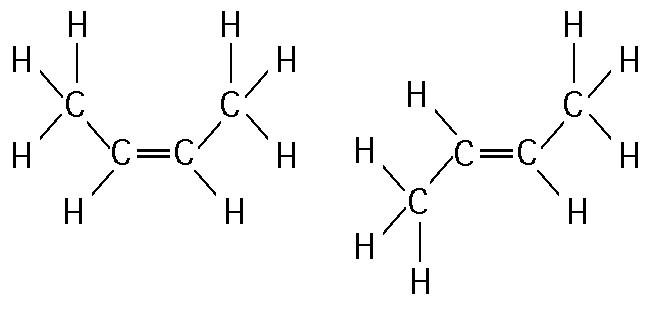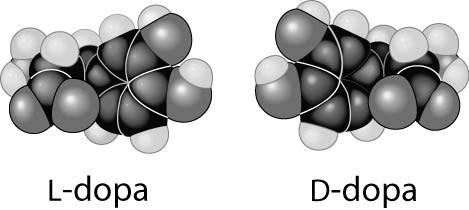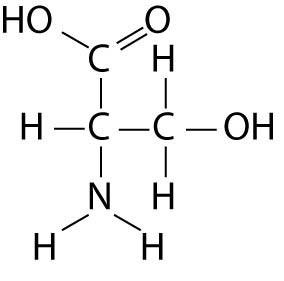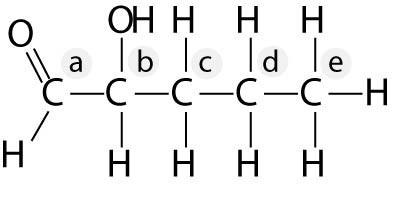1) The element present in all organic molecules is
- A) hydrogen.
- B) oxygen.
- C) carbon.
- D) nitrogen.
- E) phosphorus.
Answer:
Topic: Concept 4.1
Skill: Knowledge/Comprehension
C
2) The complexity and variety of organic molecules is due to
- A) the chemical versatility of carbon atoms.
- B) the variety of rare elements in organic molecules.
- C) the fact that they can be synthesized only in living organisms.
- D) their interaction with water.
- E) their tremendously large sizes.
Answer:
Topic: Concept 4.1
Skill: Knowledge/Comprehension
A
3) The experimental approach taken in current biological investigations presumes that
- A) simple organic compounds can be synthesized in the laboratory from inorganic precursors, but complex organic compounds like carbohydrates and proteins can only be synthesized by living organisms.
- B) a life force ultimately controls the activities of living organisms and this life force cannot be studied by physical or chemical methods.
- C) although a life force, or vitalism, exists in living organisms, this life force cannot be studied by physical or chemical methods.
- D) living organisms are composed of the same elements present in nonliving things, plus a few special trace elements found only in living organisms or their products.
- E) living organisms can be understood in terms of the same physical and chemical laws that can be used to explain all natural phenomena.
Answer:
Topic: Concept 4.1
Skill: Knowledge/Comprehension
E
4) Differences among organisms are caused by
- A) large differences in elemental composition from organism to organism.
- B) differences in the types and relative amounts of organic molecules synthesized by each organism.
- C) differences in the elements that bond with carbon in each organism.
- D) differences in the sizes of the organic molecules in each organism.
- E) differences in inorganic compounds present in each organism.
Answer:
Topic: Concept 4.1
Skill: Application/Analysis
B
5) Which of the following people was the first to synthesize an organic compound, urea, from inorganic starting materials?
- A) Stanley Miller
- B) Jakob Berzelius
- C) Friedrich Wohler
- D) Hermann Kolbe
- E) August Kekulé
Answer:
Topic: Concept 4.1
Skill: Knowledge/Comprehension
C
6) Stanley Miller's 1953 experiments proved that
- A) life arose on Earth from simple inorganic molecules.
- B) organic molecules can be synthesized abiotically under conditions that may have existed on early Earth.
- C) life arose on Earth from simple organic molecules, with energy from lightning and volcanoes.
- D) the conditions on early Earth were conducive to the origin of life.
- E) the conditions on early Earth were conducive to the abiotic synthesis of organic molecules.
Answer:
Topic: Concept 4.1
Skill: Synthesis/Evaluation
B
7) Hermann Kolbe's synthesis of an organic compound, acetic acid, from inorganic substances that had been prepared directly from pure elements was a significant milestone for what reason?
- A) It solved an industrial shortage of acetic acid.
- B) It proved that organic compounds could be synthesized from inorganic compounds.
- C) It disproved the concept of vitalism.
- D) It showed that life originated from simple inorganic chemicals.
- E) It proved that organic compounds could be synthesized from inorganic compounds and disproved the concept of vitalism.
Answer:
Topic: Concept 4.1
Skill: Synthesis/Evaluation
E
8) Stanley Miller's 1953 experiments assumed that early Earth's atmosphere contained
- A) hydrogen cyanide, formaldehyde, hydrogen gas, and water vapor.
- B) ammonia, methane, hydrogen gas, and water vapor.
- C) ammonia, methane, oxygen gas, and water vapor.
- D) amino acids, methane, hydrogen cyanide, and water vapor.
- E) methane, formaldehyde, ammonia, and carbon dioxide.
Answer:
Topic: Concept 4.1
Skill: Knowledge/Comprehension
B
9) When Stanley Miller applied heat and electrical sparks to a mixture of simple inorganic compounds such as methane, hydrogen gas, ammonia, and water vapor, what compounds were produced?
- A) mostly amino acids
- B) only simple organic compounds such as formaldehyde and cyanide
- C) mostly hydrocarbons
- D) only simple inorganic compounds
- E) both simple organic compounds and more complex organic compounds such as amino acids and hydrocarbons
Answer:
Topic: Concept 4.1
Skill: Knowledge/Comprehension
E
10) How many electron pairs does carbon share in order to complete its valence shell?
- A) 1
- B) 2
- C) 3
- D) 4
- E) 8
Answer:
Topic: Concept 4.2
Skill: Knowledge/Comprehension
D
11) A carbon atom is most likely to form what kind of bond(s) with other atoms?
- A) ionic
- B) hydrogen
- C) covalent
- D) covalent bonds and hydrogen bonds
- E) ionic bonds, covalent bonds, and hydrogen bonds
Answer:
Topic: Concept 4.2
Skill: Knowledge/Comprehension
C
12) Which of the following statements best describes the carbon atoms present in a seed-eating bird?
- A) They were incorporated into organic molecules by plants.
- B) They were processed into sugars through photosynthesis.
- C) They are ultimately derived from carbon dioxide.
- D) They were incorporated into organic molecules by plants, and they are ultimately derived from carbon dioxide.
- E) They were incorporated into organic molecules by plants, they were processed into sugars through photosynthesis, and they are ultimately derived from carbon dioxide.
Answer:
Topic: Concept 4.2
Skill: Synthesis/Evaluation
E
13) Which of the following statements best describes the carbon atoms present in a seed-eating bird?
- A) Inorganic carbon atoms in the seeds were incorporated into organic molecules by the bird.
- B) The carbon atoms ultimately came from the soil.
- C) The carbon atoms are ultimately derived from coal.
- D) The carbon atoms ultimately came from carbon dioxide incorporated into sugars through photosynthesis.
- E) The carbon atoms ultimately came from simple organic compounds that formed abiotically from inorganic carbon, hydrogen, oxygen, and nitrogen atoms.
Answer:
Topic: Concept 4.2
Skill: Synthesis/Evaluation
D
14) Why are hydrocarbons insoluble in water?
- A) The majority of their bonds are polar covalent carbon-to-hydrogen linkages.
- B) The majority of their bonds are nonpolar covalent carbon-to-hydrogen linkages.
- C) They are hydrophilic.
- D) They exhibit considerable molecular complexity and diversity.
- E) They are lighter than water.
Answer:
Topic: Concept 4.2
Skill: Knowledge/Comprehension
B
15) How many structural isomers are possible for a substance having the molecular formula C4H10?
- A) 1
- B) 2
- C) 4
- D) 3
- E) 11
Answer:
Topic: Concept 4.2
Skill: Application/Analysis
B
16) Which of the following statements correctly describes cis-trans isomers?
- A) They have variations in arrangement around a double bond.
- B) They have an asymmetric carbon that makes them mirror images.
- C) They have the same chemical properties.
- D) They have different molecular formulas.
- E) Their atoms and bonds are arranged in different sequences.
Answer:
Topic: Concept 4.2
Skill: Knowledge/Comprehension
A
17) Research indicates that ibuprofen, a drug used to relieve inflammation and pain, is a mixture of two enantiomers; that is, molecules that
- A) have identical chemical formulas but differ in the branching of their carbon skeletons.
- B) are mirror images of one another.
- C) exist in either linear chain or ring forms.
- D) differ in the location of their double bonds.
- E) differ in the arrangement of atoms around their double bonds.
Answer:
Topic: Concept 4.2
Skill: Knowledge/Comprehension
B
18) What determines whether a carbon atom's covalent bonds to other atoms are in a tetrahedral configuration or a planar configuration?
- A) the presence or absence of bonds with oxygen atoms
- B) the presence or absence of double bonds between the carbon atom and other atoms
- C) the polarity of the covalent bonds between carbon and other atoms
- D) the presence or absence of bonds with nitrogen atoms
- E) the solvent that the organic molecule is dissolved in
Answer:
Topic: Concept 4.2
Skill: Application/Analysis
B
19) Compared to a hydrocarbon chain where all the carbon atoms are linked by single bonds, a hydrocarbon chain with the same number of carbon atoms, but with one or more double bonds, will
- A) be more flexible in structure.
- B) be more constrained in structure.
- C) be more polar.
- D) have more hydrogen atoms.
- E) have fewer structurally distinct isomers.
Answer:
Topic: Concept 4.2
Skill: Application/Analysis
B
20) Organic molecules with only hydrogens and five carbon atoms can have different structures in all of the following ways except
- A) by branching of the carbon skeleton.
- B) by varying the number of double bonds between carbon atoms.
- C) by varying the position of double bonds between carbon atoms.
- D) by forming a ring.
- E) by forming enantiomers.
Answer:
Topic: Concept 4.2
Skill: Application/Analysis
E
21) A compound contains hydroxyl groups as its predominant functional group. Which of the following statements is true concerning this compound?
- A) It lacks an asymmetric carbon, and it is probably a fat or lipid.
- B) It should dissolve in water.
- C) It should dissolve in a nonpolar solvent.
- D) It won't form hydrogen bonds with water.
- E) It is hydrophobic.
Answer:
Topic: Concept 4.3
Skill: Knowledge/Comprehension
B
22) Which of the following is a false statement concerning amino groups?
- A) They are basic in pH.
- B) They are found in amino acids.
- C) They contain nitrogen.
- D) They are nonpolar.
- E) They are components of urea.
Answer:
Topic: Concept 4.3
Skill: Knowledge/Comprehension
D
23) Which two functional groups are always found in amino acids?
- A) ketone and methyl
- B) carbonyl and amino
- C) carboxyl and amino
- D) amino and sulfhydryl
- E) hydroxyl and carboxyl
Answer:
Topic: Concept 4.3
Skill: Knowledge/Comprehension
C
24) Amino acids are acids because they always possess which functional group?
- A) amino
- B) carbonyl
- C) carboxyl
- D) phosphate
- E) hydroxyl
Answer:
Topic: Concept 4.3
Skill: Knowledge/Comprehension
C
25) A carbon skeleton is covalently bonded to both an amino group and a carboxyl group. When placed in water it
- A) would function only as an acid because of the carboxyl group.
- B) would function only as a base because of the amino group.
- C) would function as neither an acid nor a base.
- D) would function as both an acid and a base.
- E) is impossible to determine how it would function.
Answer:
Topic: Concept 4.3
Skill: Application/Analysis
D
26) Which functional groups can act as acids?
- A) amino and sulfhydryl
- B) carbonyl and carboxyl
- C) carboxyl and phosphate
- D) hydroxyl and aldehyde
- E) ketone and amino
Answer:
Topic: Concept 4.3
Skill: Knowledge/Comprehension
C
27) Testosterone and estradiol are
- A) soluble in water.
- B) structural isomers of each other.
- C) proteins.
- D) lipids.
- E) enantiomers of each other.
Answer:
Topic: Concept 4.3
Skill: Application/Analysis
B
28) Testosterone and estradiol are male and female sex hormones, respectively, in many vertebrates. In what way(s) do these molecules differ from each other?
- A) Testosterone and estradiol are structural isomers but have the same molecular formula.
- B) Testosterone and estradiol are cis-trans isomers but have the same molecular formula.
- C) Testosterone and estradiol have different functional groups attached to the same carbon skeleton.
- D) Testosterone and estradiol have distinctly different chemical structures, with one including four fused rings of carbon atoms, while the other has three rings.
- E) Testosterone and estradiol are enantiomers of the same organic molecule.
Answer:
Topic: Concept 4.3
Skill: Knowledge/Comprehension
C

29) Which of the following people used this apparatus to study the formation of organic compounds?
- A) Stanley Miller
- B) Jakob Berzelius
- C) Friedrich Wohler
- D) Hermann Kolbe
- E) August Kekulé
Answer:
Topic: Concept 4.1
Skill: Knowledge/Comprehension
A

30) The two molecules shown in the figure above are best described as
- A) optical isomers.
- B) enantiomers.
- C) structural isomers.
- D) cis-trans
- E) chain length isomers.
Answer:
Topic: Concept 4.2
Skill: Knowledge/Comprehension
C

31) The figure above shows the structures of glucose and fructose. These two molecules differ in the
- A) number of carbon, hydrogen, and oxygen atoms.
- B) types of carbon, hydrogen, and oxygen atoms.
- C) arrangement of carbon, hydrogen, and oxygen atoms.
- D) number of oxygen atoms joined to carbon atoms by double covalent bonds.
- E) number of carbon, hydrogen, and oxygen atoms; the types of carbon, hydrogen, and oxygen atoms; and the arrangement of carbon, hydrogen, and oxygen atoms.
Answer:
Topic: Concept 4.2
Skill: Knowledge/Comprehension
C
32) The figure above shows the structures of glucose and fructose. These two molecules are
- A) geometric isotopes.
- B) enantiomers.
- C) cis-trans
- D) structural isomers.
- E) nonisotopic isomers.
Answer:
Topic: Concept 4.2
Skill: Knowledge/Comprehension
D

33) The two molecules shown in the figure above are best described as
- A) enantiomers.
- B) radioactive isotopes.
- C) structural isomers.
- D) nonisotopic isomers.
- E) cis-trans
Answer:
Topic: Concept 4.2
Skill: Knowledge/Comprehension
E
34) Three or four of the following illustrations depict different structural isomers of the organic compound with molecular formula C6H14. For clarity, only the carbon skeletons are shown; hydrogen atoms that would be attached to the carbons have been omitted. Which one, if any, is NOT a structural isomer of this compound

C
35) Which of the pairs of molecular structures shown below depict enantiomers (enantiomeric forms) of the same molecule?

D
36) Which of the pairs of molecular structures shown below do NOT depict enantiomers (enantiomeric forms) of the same molecule?

C
37) Which pair of molecules shown below are not enantiomers of a single molecule?

B

38) Thalidomide and L-dopa, shown below, are examples of pharmaceutical drugs that occur as enantiomers, or molecules that
- A) have identical three-dimensional shapes.
- B) are mirror images of one another.
- C) are structural isomers.
- D) are mirror images of one another and have the same biological activity.
- E) are cis-trans
Answer:
Topic: Concept 4.2
Skill: Knowledge/Comprehension
B

39) What is the name of the functional group shown in the figure above?
- A) carbonyl
- B) ketone
- C) aldehyde
- D) carboxyl
- E) hydroxyl
Answer:
Topic: Concept 4.3
Skill: Knowledge/Comprehension
D

40) Which of the structures illustrated above is an impossible covalently bonded molecule?
- A) A
- B) B
- C) C
- D) D
- E) E
Answer:
Topic: Concept 4.3
Skill: Knowledge/Comprehension
C
41) Which of the structures illustrated above contain(s) a carbonyl functional group?
- A) A
- B) C and D
- C) C
- D) D
- E) C and E
Answer:
Topic: Concept 4.3
Skill: Knowledge/Comprehension
D
42) In which of the structures illustrated above are the atoms bonded by ionic bonds?
- A) A
- B) B
- C) C
- D) C, D, and E only
- E) none of the structures
Answer:
Topic: Concept 4.3
Skill: Knowledge/Comprehension
E
43) Which of the structures illustrated above cannot form hydrogen bonds with water molecules?
- A) A
- B) B
- C) C
- D) D
- E) E
Answer:
Topic: Concept 4.3
Skill: Application/Analysis
B

44) Which functional group shown above is characteristic of alcohols?
- A) A
- B) B
- C) C
- D) D
- E) E
Answer:
Topic: Concept 4.3
Skill: Knowledge/Comprehension
A
45) Which functional group(s) shown above is (are) present in all amino acids?
- A) A and B
- B) B and D
- C) C only
- D) D only
- E) C and D
Answer:
Topic: Concept 4.3
Skill: Knowledge/Comprehension
E
46) Which of the groups shown above is a carbonyl functional group?
- A) A
- B) B
- C) C
- D) D
- E) E
Answer:
Topic: Concept 4.3
Skill: Knowledge/Comprehension
B
47) Which of the groups shown above is a functional group that helps stabilize proteins by forming covalent cross-links within or between protein molecules?
- A) A
- B) B
- C) C
- D) D
- E) E
Answer:
Topic: Concept 4.3
Skill: Knowledge/Comprehension
E
48) Which of the groups above is a carboxyl functional group?
- A) A
- B) B
- C) C
- D) D
- E) E
Answer:
Topic: Concept 4.3
Skill: Knowledge/Comprehension
C
49) Which of the groups above is an acidic functional group that can dissociate and release H+ into a solution?
- A) A
- B) B
- C) C
- D) D
- E) E
Answer:
Topic: Concept 4.3
Skill: Knowledge/Comprehension
C
50) Which of the groups above is a basic functional group that can accept H+ and become positively charged?
- A) A
- B) B
- C) C
- D) D
- E) E
Answer:
Topic: Concept 4.3
Skill: Knowledge/Comprehension
D

51) Which molecule shown above would have a positive charge in aqueous solution at pH 7?
- A) A
- B) B
- C) C
- D) D
- E) E
Answer:
Topic: Concept 4.3
Skill: Knowledge/Comprehension
E
52) Which molecule(s) shown above is (are) ionized in aqueous solution at pH 7?
- A) A
- B) B and D
- C) D and E
- D) D
- E) E
Answer:
Topic: Concept 4.3
Skill: Application/Analysis
A
53) Which molecules shown above contain a carbonyl group?
- A) A and B
- B) B and C
- C) B, C, and D
- D) D and E
- E) E and A
Answer:
Topic: Concept 4.3
Skill: Knowledge/Comprehension
B
54) Which molecule shown above has a carbonyl functional group in the form of a ketone?
- A) A
- B) B
- C) C
- D) D
- E) E
Answer:
Topic: Concept 4.3
Skill: Knowledge/Comprehension
C
55) Which molecule shown above has a carbonyl functional group in the form of an aldehyde?
- A) A
- B) B
- C) C
- D) D
- E) E
Answer:
Topic: Concept 4.3
Skill: Knowledge/Comprehension
B
56) Which molecule shown above contains a carboxyl group?
- A) A
- B) B
- C) C
- D) D
- E) E
Answer:
Topic: Concept 4.3
Skill: Knowledge/Comprehension
D
57) Which molecule shown above can increase the concentration of hydrogen ions in a solution and is therefore an organic acid?
- A) A
- B) B
- C) C
- D) D
- E) E
Answer:
Topic: Concept 4.3
Skill: Knowledge/Comprehension
D

58) Which molecule shown above can form a dimer linked by a covalent bond?
- A) A
- B) B
- C) C
- D) D
- E) E
Answer:
Topic: Concept 4.3
Skill: Knowledge/Comprehension
B
59) Which molecules shown above will form hydrogen bonds with water?
- A) Only D will form hydrogen bonds with water.
- B) All of these molecules will form hydrogen bonds with water.
- C) None of these molecules will form hydrogen bonds with water.
- D) All of these molecules except B will form hydrogen bonds with water.
- E) Only C, D, and E will form hydrogen bonds with water.
Answer:
Topic: Concept 4.3
Skill: Application/Analysis
D
60) Which molecule shown above contains an amino functional group, but is not an amino acid?
- A) A
- B) B
- C) C
- D) D
- E) E
Answer:
Topic: Concept 4.3
A
61) Which molecule shown above is a thiol?
- A) A
- B) B
- C) C
- D) D
- E) E
Answer:
Topic: Concept 4.3
Skill: Knowledge/Comprehension
B
62) Which molecule shown above contains a functional group that cells use to transfer energy between organic molecules?
- A) A
- B) B
- C) C
- D) D
- E) E
Answer:
Topic: Concept 4.3
Skill: Application/Analysis
D
63) Which molecule shown above can function as a base?
- A) A
- B) B
- C) C
- D) D
- E) E
Answer:
Topic: Concept 4.3
Skill: Knowledge/Comprehension
A
64) A chemist wishes to make an organic molecule less acidic. Which of the following functional groups should be added to the molecule in order to do so?
- A) carboxyl
- B) sulfhydryl
- C) hydroxyl
- D) amino
- E) phosphate
Answer:
Topic: Concept 4.3
Skill: Application/Analysis
D
65) Organic chemistry is currently defined as
- A) the study of compounds made only by living cells.
- B) the study of carbon compounds.
- C) the study of vital forces.
- D) the study of natural (as opposed to synthetic) compounds.
- E) the study of hydrocarbons.
Answer:
Topic: End-of-Chapter Questions
Skill: Knowledge/Comprehension
B

Which functional group is not present in this molecule?
- A) carboxyl
- B) sulfhydryl
- C) hydroxyl
- D) amino
Answer:
Topic: End-of-Chapter Questions
Skill: Knowledge/Comprehension
B
67) Which chemical group is most likely to be responsible for an organic molecule behaving as a base?
- A) hydroxyl
- B) carbonyl
- C) carboxyl
- D) amino
- E) phosphate
Answer:
Topic: End-of-Chapter Questions
Skill: Knowledge/Comprehension
D
68) Which of the following hydrocarbons has a double bond in its carbon skeleton?
- A) C3H8
- B) C2H6
- C) CH4
- D) C2H4
- E) C2H2
Answer:
Topic: End-of-Chapter Questions
Skill: Application/Analysis
D

9) Choose the term that correctly describes the relationship between these two sugar molecules:
- A) structural isomers
- B) cis-trans isomers
- C) enantiomers
- D) isotopes
Answer:
Topic: End-of-Chapter Questions
Skill: Application/Analysis
A

70) Identify the asymmetric carbon in this molecule.
- A) A
- B) B
- C) C
- D) D
- E) E
Answer:
Topic: End-of-Chapter Questions
Skill: Application/Analysis
B
71) Which action could produce a carbonyl group?
- A) the replacement of the OH of a carboxyl group with hydrogen
- B) the addition of a thiol to a hydroxyl
- C) the addition of a hydroxyl to a phosphate
- D) the replacement of the nitrogen of an amine with oxygen
- E) the addition of a sulfhydryl to a carboxyl
Answer:
Topic: End-of-Chapter Questions
Skill: Application/Analysis
A